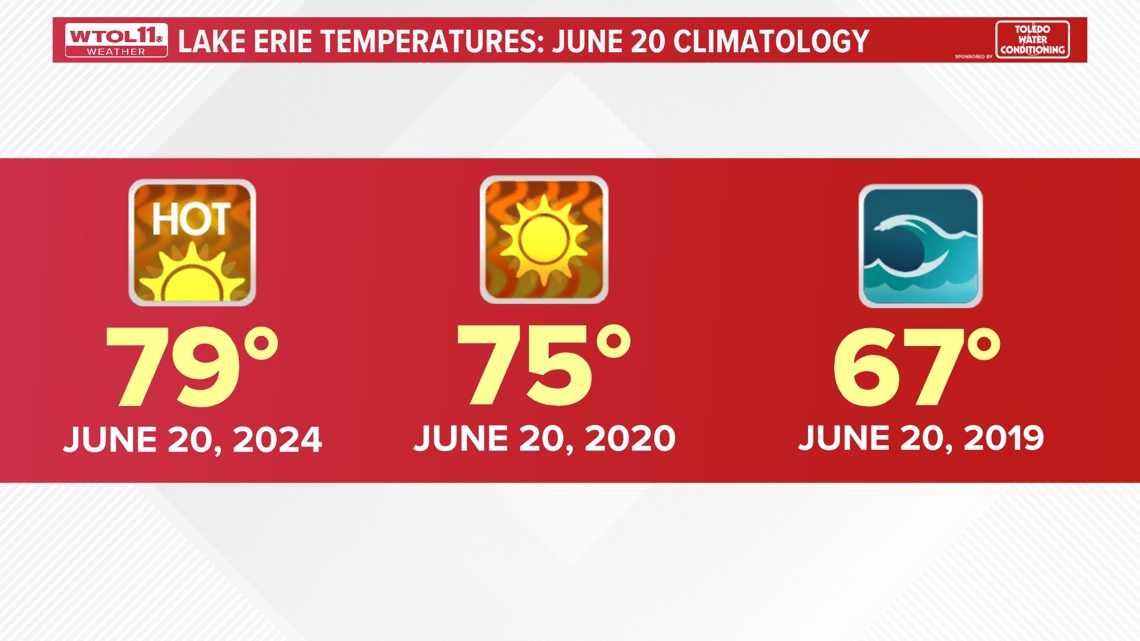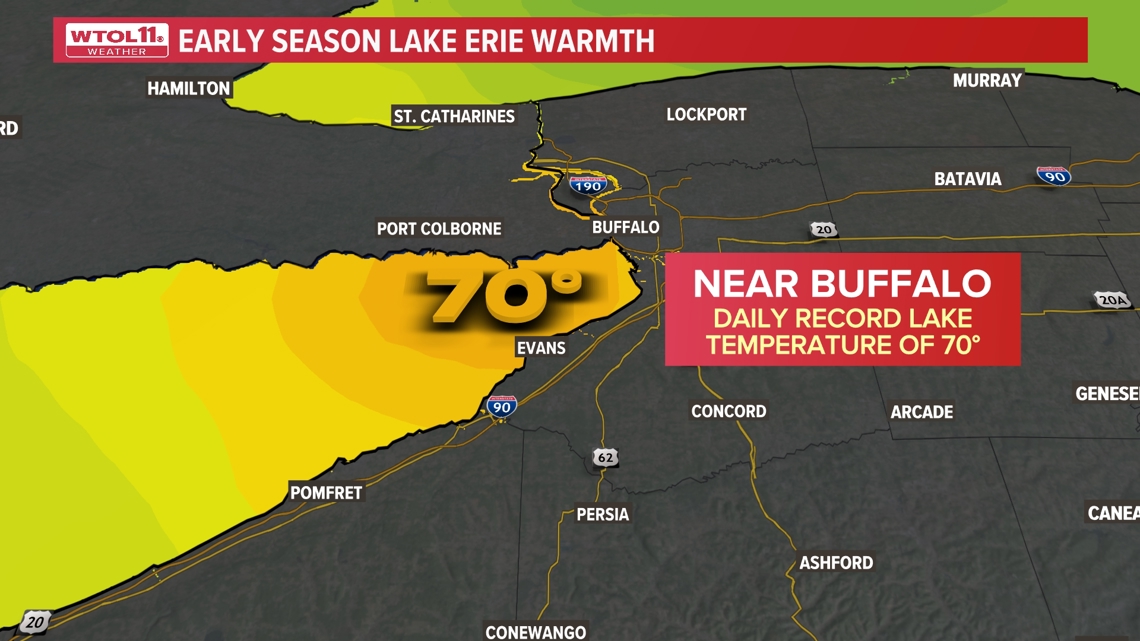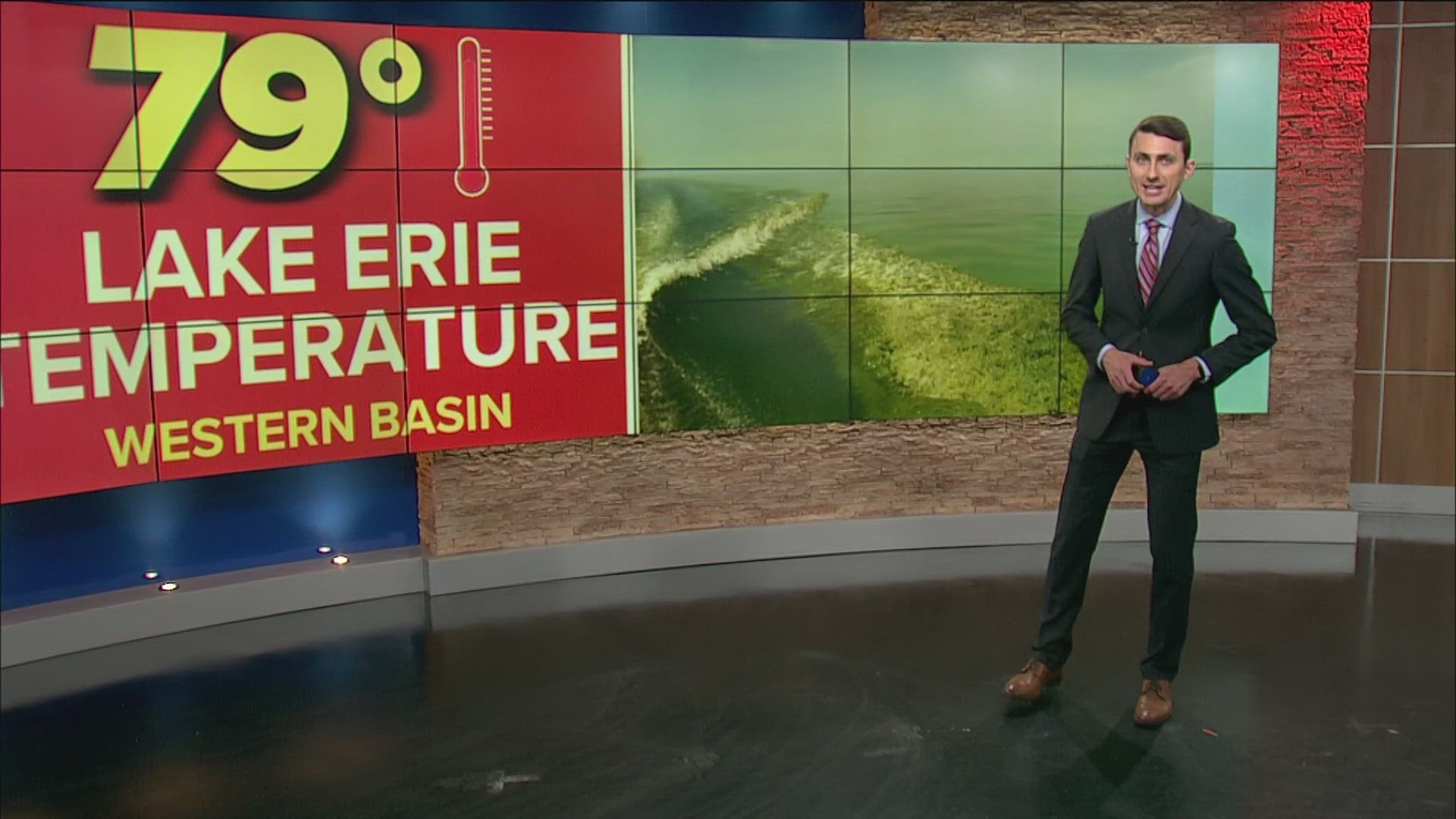TOLEDO, Ohio — Thursday officially kicked off the summer season, also marking the start of the yearly harmful algal bloom on Lake Erie. With rising temperatures, blue-green algae will soon spread throughout the western basin. but how has the intense summer heat wave impacted the algae outlook? Meteorologist John Burchfield has the answer.
Temperatures and precipitation are the two biggest weather variables that impact algae on Lake Erie. This week has brought both summer heat and heavy rainfall to the Maumee River watershed. Not only have air temperatures climbed to the upper-90s this week, but water temperatures have also skyrocketed to record levels.
RELATED: ALERT DAY issued for Monday through Saturday during massive 'heat dome' and record-breaking warmth
During the month of June, the western basin of Lake Erie is typically around 71 degrees, though weather patterns can cause significant variation. Lake water temperatures are often only in the 60s during the month of June, but can occasionally climb closer to 80 degrees. Thursday afternoon, buoy observations indicated a daily record lake water temperature of 79 degrees in the western basin. In recent years, lake water temperatures on June 20 have ranged from 67 degrees in 2019 to 75 degrees in 2020.


While June water temperatures are not always predictive of the severity of the harmful algal bloom, the correlation is undeniable. A sustained heat wave with heavy precipitation lasting into July often provides the necessary ingredients for algae to proliferate. Not only has western Lake Erie seen historically warm conditions, but other portions of the Great Lakes have felt similarly warm conditions.


Lake water temperatures reached 70 degrees in the deeper eastern waters of Lake Erie near Buffalo, New York, setting a daily record high temperature. This record temperature is a sizeable seven degrees warmer than average. While the shallower waters of Lake Erie near Toledo warm up more quickly and experience more severe algal blooms, this widespread warmth goes to show the magnitude of the heat wave.


While NOAA released an initial May outlook for the summer harmful algal bloom, weather conditions have shaped the forecast and will continue to a play a role in the development and proliferation of blue-green algae in the western Basin.
Next Thursday, June 27 NOAA will release its official summer algae outlook in a live web event with Stone Laboratory and Ohio Sea Grant at The Ohio State University. This outlook will take into consideration observed weather trends as well as nutrient levels in Lake Erie after heavy rainfall contributed to runoff in the Maumee River and thus the lake.
Stay tuned to WTOL 11 and the Climate Friday Newsletter for updates on the summer 2024 harmful algal bloom outlook.
WATCH PREVIOUS EPISODES OF CLIMATE FRIDAY

